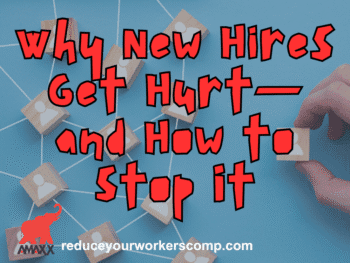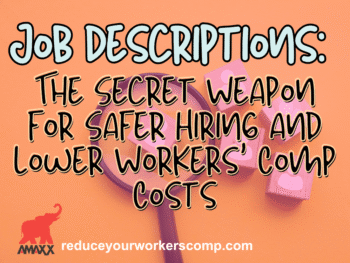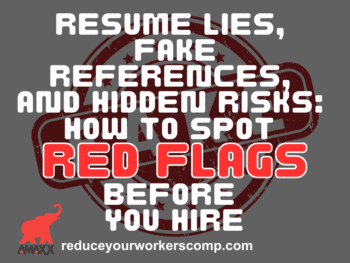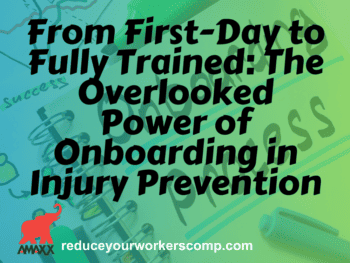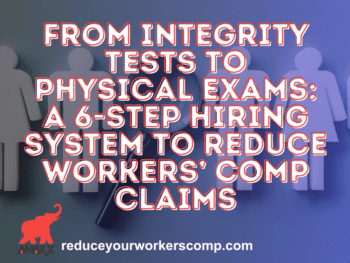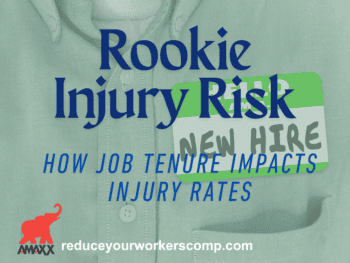
Getting employees to engage with their organizations is not a one- or two-step process. But it also doesn’t need to be unreasonably complex. Companies that think of their employees as team partners and valued customers from day one have an easier and less expensive time of it.
Click Link to Access Free PDF Download
“4-Step Sequence For Effective Employee Screening, Hiring, & Placement”
Pre-Hiring
Employee recruitment and hiring methods can set the right tone for employees to feel engaged with their companies.
- Employee referrals. Job applicants who are referred by current employees are among the most engaged workers. Building trust with new employees who already feel they have an ‘in’ with the company is much easier than starting from scratch with someone who is not familiar with the organization or its culture.
- Community outreach. Short of in-house referrals, partnering with local institutions, goes a long way to help job applicants feel an affinity with a company. More than just responding to a blind ad, those who seek employment through organizations they know and trust are more likely to have positive feelings about the company from the very beginning. Some companies are reaching out to local colleges and even high schools to recruit new talent, especially with the exodus of baby boomers.
- New technology. Using new technologies is another way employers can gain the trust of new, especially younger recruits, in several ways.
- Younger workers are comfortable with new technology, as they’ve grown up with it.
- Artificial intelligence, robotics, machine learning, and the like can be implemented to handle the more repetitive, mundane tasks of a job, leaving the new worker to undertake more important and challenging tasks.
- Educating recruits on the advantages of new technologies, including that these are there to help not replace workers, lets them know the company cares about them beyond just being a faceless job holder.
Once Hired
During the onboarding process and initial employment, employers can focus on making sure the new recruit feels connected. Having an inviting culture is key. Employees who truly believe the company cares about them are more inclined to be engaged, then those who do not.
Employers can demonstrate they have a caring, supportive culture in a variety of ways.
- Health and well-being. Whether it is physical, emotional, or financial health, organizations can demonstrate they are genuinely concerned about their workers, through employee assistance programs and other avenues.
- Resilience training. Employees on the front lines, especially customer service representatives, can be barraged by negativism day in and day out. This can take an emotional toll on even the most resilient person. Helping incoming employees improve their resilience skills also makes them feel more a part of the team.
- Fun environment. The work needs to get done. At the same time, however, the atmosphere does not need always to be strict and rigid. Allowing workers to experience lightness is OK. For example, allowing them to decorate their work areas for Halloween or holding the occasional pizza party during lunchtime can be great stress relievers and help workers feel connected and engaged.
- Mentoring. New workers typically feel alone and somewhat anxious about coming into the new environment. Pairing them with a more seasoned, non-managerial worker helps them acclimate not only to the job requirements but the overall workplace community.
- Personal growth. Organizations that prevent workers from exploring new opportunities may find their workers leaving. Instead, find out what goals and dreams workers have and allow them to experience other parts of the company that may fit their desires. Work rotation, for example, allows workers to learn about other parts of the organization and allows them to grow while feeling more engaged with the company.
- Transparency and Employees don’t live in a vacuum. They talk to other people, pay attention to the news and social media, and will likely know if something unusual is going on, whether it’s bad or good news. Instead of keeping employees in the dark, organizations are advised to stay ahead of any news about the company and communicate it with them. This also ensures whatever news an employee sees on social media doesn’t spiral out of control.
- Include remote workers. As more employees work from home or other remote locations, employers may struggle with ways to engage them. But these workers can feel connected to the company through virtual means. Mentorships programs, for example, can extend to remote workers. Highly-engaged small groups can be established online, where workers frequently communicate with one another. Virtual meetings via webcams can be held. Online company newsletters can keep remote workers informed, especially if they are also encouraged to contribute to them.
- Create a diverse and inclusive mindset. All employees should feel comfortable with their coworkers and unafraid to shares their views – even if they differ from those of their coworkers. Meetings should include workers from all parts of the company, from the mailroom to the C-Suite, and all workers should be allowed and encouraged to express their opinions.
- Seek employee feedback. Anonymous employee surveys that elicit honest opinions about the company can identify areas where changes can be made to improve engagement.
Conclusion
Employees who feel engaged with their companies and fellow workers are happier, more productive, and less likely to leave for greener pastures. When they become injured, they are more likely to adhere to their treatment plans and, therefore, recover and return to work more quickly. And they are far less likely to seek out legal counsel. Organizations that understand this and work to make their employees feel connected are more likely to see better bottom lines.

Author Michael Stack, CEO Amaxx LLC. He is an expert in workers’ compensation cost containment systems and helps employers reduce their workers’ comp costs by 20% to 50%. He works as a consultant to large and mid-market clients, is a co-author of Your Ultimate Guide To Mastering Workers Comp Costs, a comprehensive step-by-step manual of cost containment strategies based on hands-on field experience, and is founder & lead trainer of Amaxx Workers’ Comp Training Center.
Contact: mstack@reduceyourworkerscomp.com.
Workers’ Comp Roundup Blog: https://blog.reduceyourworkerscomp.com/
©2019 Amaxx LLC. All rights reserved under International Copyright Law.
Do not use this information without independent verification. All state laws vary. You should consult with your insurance broker, attorney, or qualified professional.

